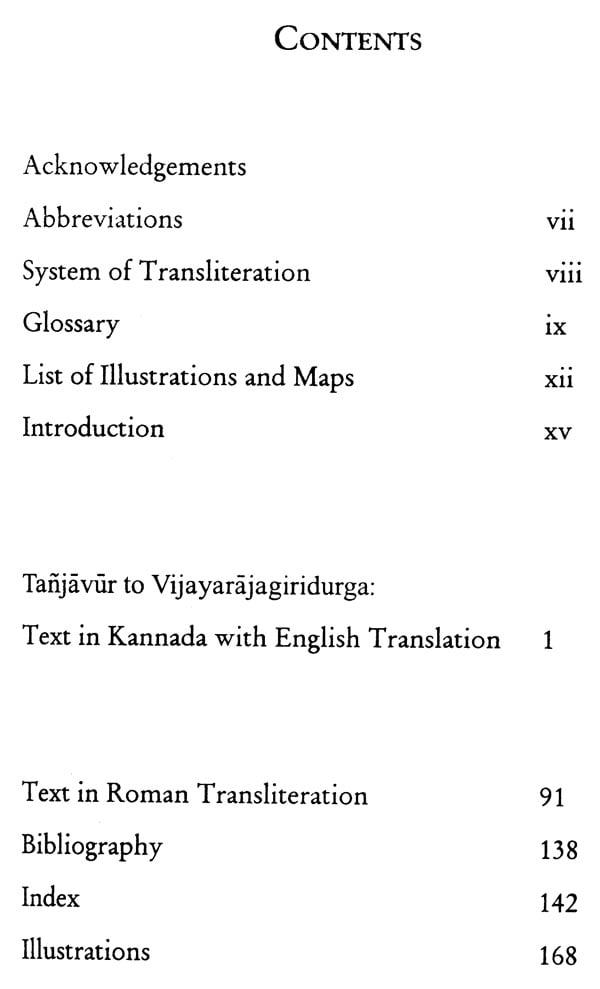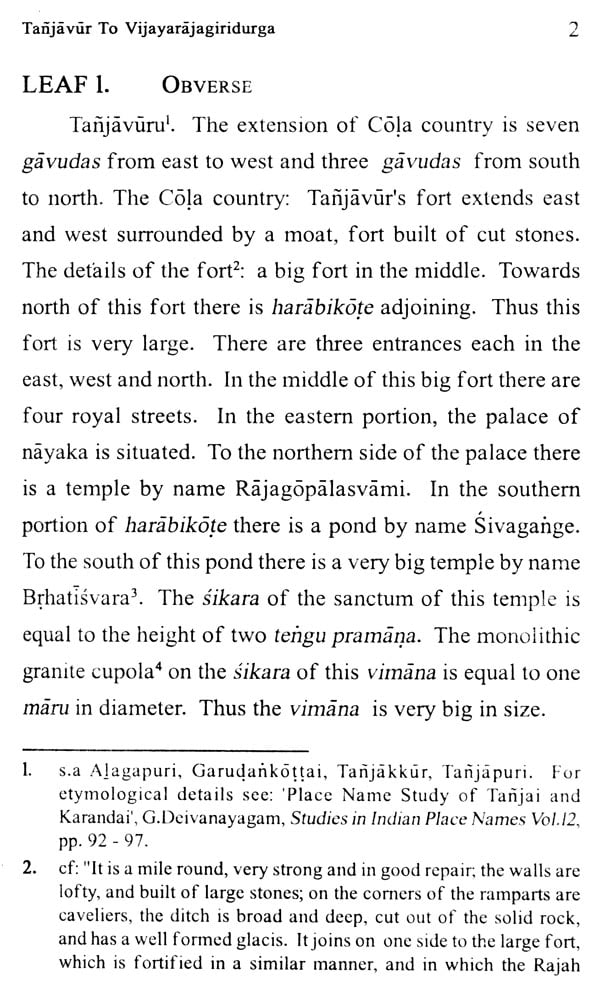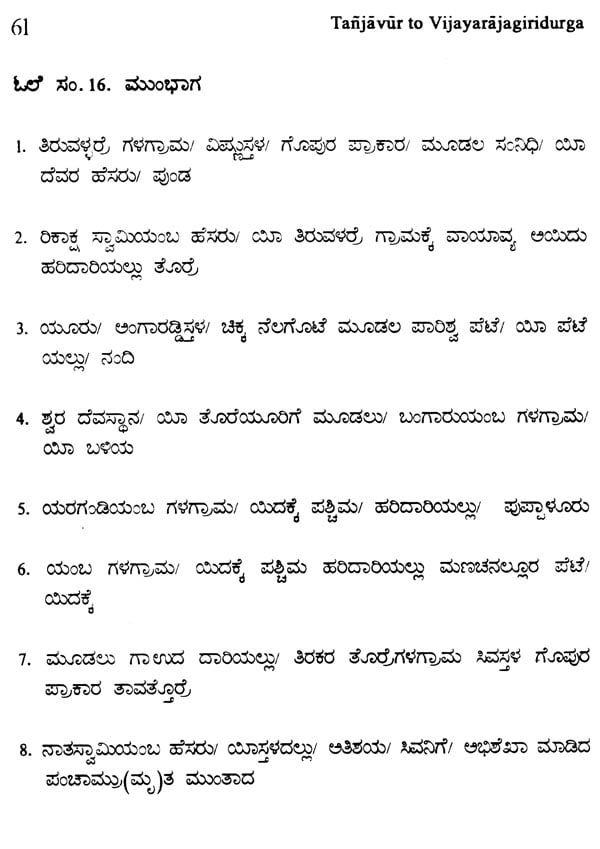
Tanjavur Vijayaraja Giri Durga - A Travelogue in Kannada Printed from Palm Leaf Manuscripts (An Old and Rare Book in Kannada)
Book Specification
| Item Code: | MZU342 |
| Author: | V. Gopala Krishna & Keladi Gunda Jois |
| Publisher: | Institute of Asian Studies, Chennai |
| Language: | Kannada and English |
| Edition: | 1997 |
| Pages: | 226 (Throughout B/w Illustrations) |
| Cover: | PAPERBACK |
| Other Details | 8.50 X 5.50 inch |
| Weight | 260 gm |
Book Description
During the period of Muslim rulers the available stone inscriptions and copper-plates are very few in number. In their place, the Muslim rulers used sannad, hukumnama, firman, bakhairu, etc. to proclaim their orders. Though they are preferable to literary and other information one must be careful about their authenticity for there may be spurious and forged documents. These records also supplement the source of information for writing the history.
In the ancient Indian literature via: The Ramayana, the Mahabharata, and Bhagavata there are instances of heroes visiting holy places, sacred rivers, venerable hermitages, and the authors of these works have given their vivid description. The tirthayatras of Balarama and Vidura in the Bhagavata are well known. Kalidasa (c. 400) in his Meghaduta narrates many places, rivers, hills, mountains and valleys. The caritas in Sanskrit literature give some useful information about the history of our land. Dasakumaracarita (c. 400 A.D.) of Dandin is an imaginary romance reflecting many social and economic conditions of the period. Bana, the court poet of the king Harsavardhana (c. 700 A.D.) in his work Harsacarita deals with the early life of Harsa and throws much light on the social, economic and political conditions prevailing in the first half of the 7th century. But most of these caritas eulogize the kings. Therefore, the historians cannot rely on them for the relevant information. In the later works like Kalhana's Rajatarangini (1150 A.D.), a chronicle of 3500 verses, in addition to its literary value, a lot of information about the history, geography, politics, society, etc., is available. Venkatadhvari (17th A.D.) in his Visvagunaadarsa has given a lively description of the travel by gandharvas. But such works are very few in number.
Book's Contents and Sample Pages












